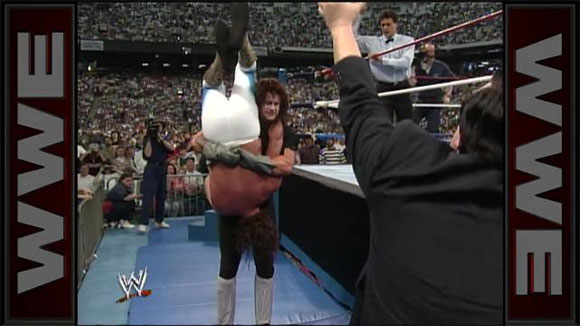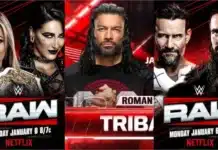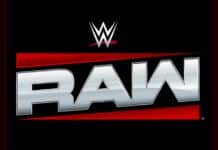
As we continue down the road to Wrestlemania, the next stop was The Hoosier Dome, a massive venue in Indianapolis, Indiana. The dome is packed, which actually provides some insight into the previous year’s edition that we discussed yesterday, WM 7. The company line on the venue change in 1991 was security concerns because of the storyline that saw Sgt. Slaughter support Iraq during a time when The Gulf War made headlines in the news. The other side of the story, according to The Wrestling Observer’s Dave Meltzer, is that the 100,000-seat LA Coliseum had very sluggish ticket sales, prompting the company to move the event to the much smaller LA Sports Arena that had 15,000 seats. I speculated yesterday that it’s possible with the Ultimate Warrior being known as difficult to work with, perhaps they didn’t want to bank the WM main event on him. The other possibilities are that even with the heat he had, Sgt. Slaughter hadn’t been in the WWF in several years when he returned so maybe the fans didn’t consider him a top villain or it could’ve been that people just didn’t want to buy into a wrestling angle based on a legitimate war. Either way, Warrior dropped the title to Slaughter just two months before WM 7 so WWF brass would’ve had some indication prior to that about how tickets were selling so it appears that the security concerns were more of a cover for low ticket sales than anything. The fact that The Hoosier Dome drew a big house without Warrior advertised to appear might be an indication that the former Jim Hellwig just wasn’t pushing ticket sales as champion in 1991.
The show opened with Reba McIntyre, no relation to Drew, as far as I know, singing The Star Spangled Banner. The first match saw a heel Shawn Michaels beat Tito Santana, who had started to use the El Matador persona. It was a solid way to start the show and there are a few things to note here. Micheals, who infamously threw Marty through the barber shop window just a few months before this, was made to look like a star, not only because of his win at a WM, but his pairing with Sherri Martel. Sherri, who was sent flying from the ring after Ms. Elizabeth made the save for Macho Man the previous year, had really only been a manager for the main event scene before this so her association was a part of the presentation to help move Michaels up the card. For Tito, he was nearly the final chapter of his extensive WWF career, but he could still go in the ring, as he kept pace with his younger opponent throughout the bout.
The Undertaker vs. Jake Roberts was a short, but solid match, as the two structured a match that was very logical, but still included the limited selling of Undertaker’s character. Undertaker won with a tombstone on the floor for what became Jake’s final appearance at Wrestlemania for several years. Before the show, Jake demanded a release from the company or he refused to work the match so he was given the release so he could look for other options. In truth, this move more or less symbolized the end of the prime of his career. A few months after his WWF exit, he debuted in WCW, but only lasted there for a few months before he worked a very lucrative stint in Mexico for AAA. As we all know, Jake’s short-lived return to the WWF in 1996 would last less than a year before his well-documented personal problems caused his dismissal from the company. Thankfully, Roberts has found stability in recent years and currently has a role as a manager for AEW. Regardless of the way his personal problems overshadowed much of his career, it should be noted that Jake had many stellar years of work, including prior to his WWF run.
Bret Hart vs. Roddy Piper for the IC title is really a textbook example of ring psychology, which is why it’s remembered as one of Roddy’s better actual wrestling matches. Roddy wasn’t know as a technician, but the two exchanged maneuvers in the early portion of the contest. As it progressed, the more in-ring wrestling there was, the more of an advantage that Bret had, and when it shifted toward more of a fight, Piper took control of the match. The result of this was a back and fourth drama that had the intensity increase as the action continued. Bret was bleeding, adding another layer to the bout because it put over Piper’s advantage in the fight aspect. Finally, the ref got knocked down and Piper had a chance to use the ring bell, but decided against it. Eventually, Bret pinned Piper with the same finish that was used at The Survivor Series contest with Stone Cold Steve Austin in 1996, as Bret countered the sleeper hold to get a three count.
Another bout on the card that really showcased a level of ring psychology not often seen on this show is the WWF title match of Ric Flair defending his belt against Randy Savage with the angle surrounding the feud that Flair claimed to have photos of Ms. Elizabeth to show to the world. This match is well-known so discussing in-depth details would be repetitive, but it must be mentioned how well these two worked together to create the drama that unfolded in the squared circle. It was another bout that had back and fourth action that the fans were really invested in as the bout reached the conclusion. Flair blatantly blades on camera and his signature bleached-blond hair is stained red, a visual often seen throughout his legendary career. As we’ve talked about in prior articles for the Wrestlemania Challenge series, Savage’s selling is so well done here, and as he limps toward the conclusion of the match after the figure four, it adds such an emphasis on the consequences of the moves. Even the finish, where Savage uses a roll up to pin Flair, doesn’t do anything to compromise the credibility of Savage selling the injured leg. In many ways, this match stole the show, something that can be said often about Savage at that point in his career.
The second half of the card wasn’t awful, but there wasn’t anything spectacle either, as it was more of a way to set the table for the main event. Ray Combs, the host of Family Feud, was the ring announcer for the eight-man tag on the card and had a few funny lines about the heels that he claimed he got from surveying the audience so I guess Combs was the first to conduct a survey in wrestling. Hey Yo. The eight man tag was a basic, paint-by-numbers eight man of the era. Another average tag match was Money Inc taking a count out against the Natural Disasters. Tatanka won a decent, but basic match against Rick Martel, while Owen Hart pinned Skinner in about a minute.
As we’ve talked about recently, most of Hulk’s Wrestlemania matches, including the one from last year against Slaughter, were more sizzle than substance, which is fine if that tactic isn’t used too many times. His bout against Sid was more or less the standard Hulk Hogan match, with the exception being the DQ finish to protect Sid. Speaking of Sid, it’s been said often that he’s a rather odd bird and some of his career choice seem to confirm that description. He worked a WM main event against the biggest star in the company, but left after disagreements with management a month later. Sid made sporadic jumps throughout his career between WCW and the WWF, and usually had a top spot, but most of those stints were brief depending on the start of softball season. It’s also comical that WM VIII was suggested as possibly Hogan’s last match because he was scheduled to film a movie, but he’s still trying to politic for another WM match almost thirty years later.
What do you think? Comment below with your thoughts, opinions, feedback and anything else that was raised.
Until next week
-Jim LaMotta
E mail [email protected] | You can follow me on Twitter @jimlamotta







